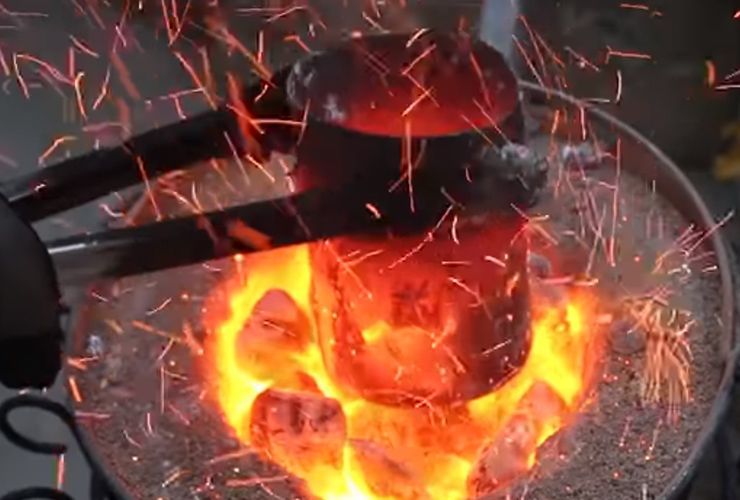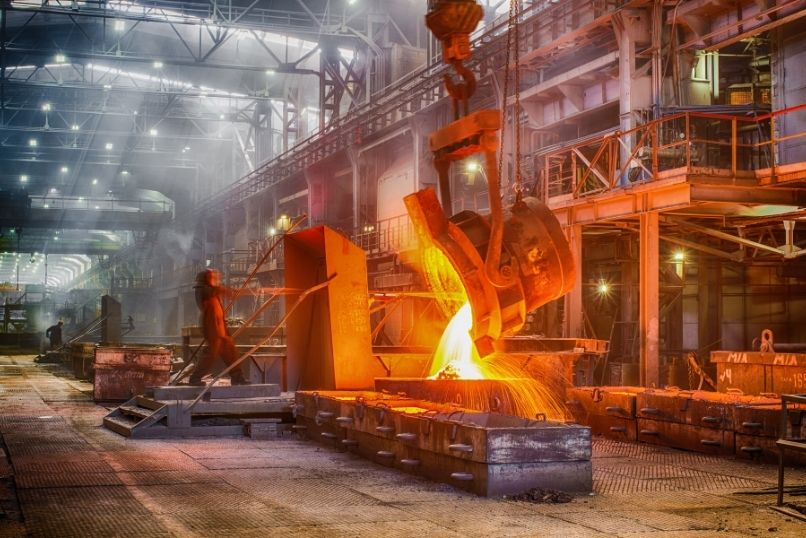Understanding Metal Casting Applications Across Manufacturing Sectors
Wiki Article
Understanding Metal Casting Procedures: Advancements and Trends in the Foundry Market
The foundry market is experiencing considerable makeovers driven by technological advancements. Innovations such as 3D printing and artificial knowledge are reshaping metal casting procedures, boosting effectiveness and precision. Lasting techniques are gaining traction, emphasizing the relevance of ecological duty. Furthermore, the introduction of advanced products and automation is boosting general casting high quality. These growths recommend a crucial change in the market, elevating questions regarding future instructions and implications for suppliers.Improvements in 3D Printing for Metal Casting
Current improvements in 3D printing innovation have actually considerably transformed the landscape of metal casting. The assimilation of additive production methods has enabled the quick production of complicated patterns and mold and mildews that were difficult or previously hard to accomplish with standard approaches. By utilizing materials such as sand and metal powders, makers can develop detailed geometries that enhance design adaptability and minimize product waste. This development not just quickens the prototyping process yet also enables the customization of elements tailored to details applications.
3D printing assists in much shorter lead times, which is crucial in sectors requiring quick turnaround for parts. The innovation likewise supports the manufacturing of lightweight frameworks, thus enhancing power performance in final result. Therefore, the foundry industry is observing a change in the direction of more lasting practices, driven by the performance and precision used by these contemporary 3D printing methods in metal casting processes.
The Role of Expert System in Precision Manufacturing
As industries significantly embrace advanced manufacturing innovations, fabricated knowledge (AI) is playing a crucial duty in boosting precision production procedures. AI algorithms analyze huge datasets to optimize and recognize patterns manufacturing parameters, causing improved accuracy and performance. In steel casting, AI aids in anticipating maintenance, lowering downtime by forecasting devices failings before they take place.AI-driven simulations make it possible for manufacturers to model the casting process, refining designs and reducing problems. Machine knowing techniques boost quality assurance by spotting anomalies in real-time, thus making certain that only items fulfilling rigorous specs continue via the manufacturing line.

Sustainable Practices in the Foundry Market
Sustainability has actually become an important focus in the foundry sector, triggering manufacturers to take on methods that decrease ecological effect while keeping performance - Metal Foundry. One prominent method includes the recycling of materials, particularly steels, which substantially reduces waste and energy usage. Foundries are significantly implementing closed-loop systems, allowing for the reuse of sand and various other casting products, therefore decreasing the need for virgin resourcesAdditionally, energy-efficient modern technologies, such as electrical heaters, are acquiring traction, as they lower greenhouse gas discharges compared to traditional approaches. Additionally, numerous shops are discovering the use of biodegradable binders and environmentally friendly layers to decrease toxic byproducts. Employee training on lasting methods see this website has actually likewise become vital, cultivating a culture of environmental duty within organizations. On the whole, these sustainable techniques not only add to ecological preservation however likewise enhance the lasting feasibility of the foundry industry in a significantly eco-conscious market.
Developments in Products for Improved Casting Quality
With the continuous development of the foundry industry, technologies in products have actually come to be essential for boosting casting quality. Advanced alloys and composite products are significantly being made use of to boost mechanical buildings and decrease flaws in castings. These materials frequently supply exceptional strength-to-weight proportions and improved resistance to corrosion and wear, dealing with the demands of modern-day applications.Furthermore, the unification of nanomaterials is acquiring grip, enabling finer microstructures that lead to improved surface finishes and dimensional precision. Aluminum Casting. 3D printing innovations likewise contribute in generating intricate geometries with marginal waste, allowing making use of specialized materials that were formerly testing to cast
Moreover, the development of eco-friendly binders and additives adds to lasting practices while preserving top notch end results. Jointly, these advancements not just enhance the efficiency of actors products yet additionally align with the market's change towards sustainability and effectiveness.
Automation and Robotics in Metal Casting Procedures
Automation and robotics are changing metal casting processes by boosting and improving operations precision. In modern factories, robot systems are employed for tasks such as mold and mildew handling, putting, and completing, considerably minimizing human intervention. This not only decreases the danger of mishaps however also guarantees constant top quality in production.Automation innovations, such as computer system numerical control helpful resources (CNC) equipments, assist in detailed styles and complex geometries that were formerly testing to accomplish. In addition, real-time information analytics make it possible for manufacturers to optimize and keep track of procedures efficiency continually.
The assimilation of automation brings about boosted performance and effectiveness, permitting shops to satisfy expanding market demands while decreasing preparations. As the market embraces these improvements, the labor force is also advancing, calling for brand-new abilities to operate and keep sophisticated machinery. In general, the fostering of automation and robotics is a pivotal trend forming the future of steel casting processes.
Frequently Asked Questions
What Is the Background of Metal Casting Techniques?
Metal casting strategies day back to old human beings, with evidence of bronze casting in Mesopotamia around 3000 BCE. Over centuries, approaches developed greatly, incorporating improvements in products and technology, shaping contemporary commercial practices.How Does Metal Casting Influence the Environment?
Metal casting considerably affects the environment via power intake, discharges, and waste generation. Nevertheless, innovations in sustainable methods and modern technologies intend to reduce these results, promoting even more eco-friendly methods within the market.What Precaution Are Crucial in Foundries?

What Prevail Problems in Metal Casting Products?
Usual defects in metal casting items consist of porosity, shrinking, misruns, cool shuts, and wikipedia reference surface flaws. These problems occur from aspects such as improper temperature control, poor mold and mildew style, and contamination during the casting process.How Do Foundries Guarantee High Quality Control in Casting Processes?
Shops apply rigorous quality assurance procedures through normal inspections, standardized testing, process monitoring, and adherence to market requirements. These techniques aid determine issues early, making sure the stability and reliability of the final casting products.Developments such as 3D printing and synthetic knowledge are reshaping steel casting processes, improving effectiveness and precision. Current advancements in 3D printing modern technology have actually substantially changed the landscape of steel casting. Automation and robotics are changing metal casting processes by simplifying operations and improving precision. Metal casting strategies date back to ancient worlds, with proof of bronze casting in Mesopotamia around 3000 BCE. Common issues in steel casting products consist of porosity, shrinkage, misruns, cold shuts, and surface flaws.
Report this wiki page